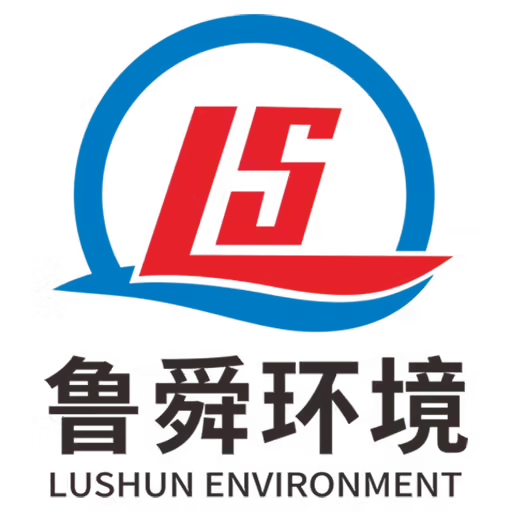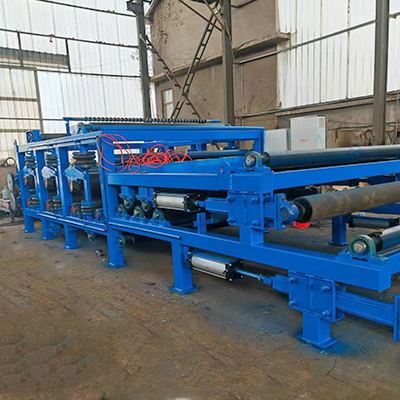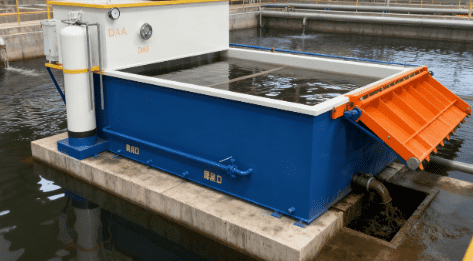At the end of the sewage treatment plant, the belt filter press processes thousands of tons of sludge per day with a continuous process of “flocculation-pressing-stripping”, reducing the moisture content from 95% to below 75%. This equipment, which consists of 127 sets of precision components, redefines the efficiency standard of solid-liquid separation through millimeter-level control and intelligent algorithms.
Four steps to achieve sludge “dewatering revolution”
- Accurate ratio:
The sludge pump (flow rate 5-50m³/h) and the PAM metering pump (accuracy ±1%) collide in the Y-type mixer, and the 0.1% concentration of flocculant instantly envelops the 2-5μm particles. Data from a municipal plant: After flocculation, the floc particle size increases from 0.3mm to 2.5mm, and the filtration resistance decreases by 60%.
- Time and space control:
The reaction is completed in 15 seconds in the static mixer to avoid excessive shearing. A paper mill transformation case: the integrity of the flocs increased by 40% and the pre-dehydration time was shortened by 2 minutes.
The “capillary action” of the filter belt
- Filter belt black technology:
The porosity of the 3-layer composite filter belt (needle punch layer + base fabric layer + monofilament layer) is 42%, and the water permeability is 80L/(m・s・kPa). A printing and dyeing factory measured: a 5cm thick sludge layer was drained in 3 minutes, and the free water removal rate was 70%.
- Even distribution technique:
Weir type distributor (height 8cm) + inclined plate diversion, mud thickness deviation <±2mm. After the transformation of a food factory, the standard deviation of sludge thickness in the pre-dehydration area dropped from 3mm to 0.8mm.
“Progressive Exploitation” of Mechanical Force
- Roller matrix:
13 sets of pressing rollers (φ610→φ152mm) form 7 levels of pressure gradient (0.1-1.2MPa). Case of oily sludge in a steel plant: maximum pressure 1.5MPa, oil removal rate 92%.
- Filter belt tension game:
The upper and lower filter belts are pneumatically tensioned (5-15kN) to form a “sandwich” squeeze, and the lateral shear force generated by the S-shaped roller destroys the floc structure. Measured data: The amount of bound water released accounts for 35% of the total dehydration.
- Dehydration Kinetics:
The residence time in the pressing section is 3-8 minutes, and the solid content of municipal sludge jumps from 15% to 25%. A provincial capital city processes 800 tons per day, and the mud cake thickness is stable at 1.8cm.
Millimeter-level “peeling art”
- Scraper geometry:
The 30° angle polyurethane scraper (blade R0.1mm) is close to the filter belt, and the mud cake stripping rate is >99%. Case of a chemical park: 24-hour continuous operation without mud cake residue.
- Filter belt regeneration system:
18MPa water jet + ultrasonic pre-cleaning, the filter belt water permeability remains above 92%, and the service life is extended to 10,000 hours (6,000 hours with traditional process).
“Customized solutions” for multiple industries
- Municipal sludge:
Ten sewage treatment plants in a municipality directly under the central government use 3-meter-wide models, processing 8,000 tons of sludge per day. The mud cake can directly meet the co-treatment of cement kilns (water content <75%), saving 24 million yuan in landfill costs annually.
Industrial battlefield:
- Paper Mills:
Treating white water sludge with 3000mg/L SS, the sludge cake has a solid content of 28% and a calorific value of 4500kJ/kg, which can replace coal and reduce costs by 18%.
- Pharmaceutical Factory:
The acid- and alkali-resistant filter belt (pH 2-12) is used to treat antibiotic bacterial residues. After dehydration, the inactivation rate of E. coli is 99.99%, breaking through the bottleneck of traditional processes.
- Emergency rescue:
In a river dredging project, a vehicle-mounted belt conveyor (5m³/h) processed 2,000 tons of mud in 48 hours. The dehydrated mud cake was directly used for embankment filling, saving 60% of the transportation cost.
Environmental philosophy on the assembly line
This 12-meter-long device “transforms” 4 million tons of sludge every year, but it always operates in a low-key manner. Its greatness lies in breaking down the complex dehydration process into quantifiable industrial standards; its gentleness lies in making the treatment of every drop of sewage within reach of the “last mile”. As the operator said: “When the mud cakes fall neatly, what I see is not residue, but a commitment to green waters and green mountains.”






